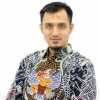
- Case Study 6
Kampung Peneleh, Surabaya (Indonesia)
Surabaya, is the capital of Jawa Timur (East Java), located on northeastern Java island and the second-largest-city in Indonesia. The national government recognizes only the continuous core metropolitan area (Surabaya, Gresik and Sidarjo) as Greater Surabaya (Zona Surabaya Raya) with a population of 6,484,2060 (2010), making Surabaya now the third largest metropolitan area in Indonesia, after Greater Jakarta and Greater Bandung.
Kampung Peneleh is one of the oldest “kampong” or “kampung” (urban village) neighborhoods in Surabaya, with many layers of identity. The neighborhood is adjacent to Peneleh Cemetery, a Dutch colonial cemetery that was built in 1814. The neighborhood is also popularly linked to the history of Sunan Ampel (15th century), one of the Muslim saints who spread Islam in Java.
Until now, the alleyways of the kampung are intertwined with old Muslim graves from the 18th-19th century. Contrary to the usually popular perception of graveyards as eerie sites, these old Muslim graves have become part of the contemporary everyday life and have initiated spiritual legends of the neighborhood.
Kampung Peneleh is also the place where Soekarno, the first president of Indonesia who was a leader of Indonesia’s nationalist movement, spent his youth years. The house of Tjokroaminoto (Tjokro House), one of the national heroes who was also Soekarno’s teacher, was also in the neighborhood and is now a small museum. The neighborhood is also peppered with colonial-era houses and “rumah jengki”, a unique early-independence residential architecture (1950-1960).
The city government have designated the neighborhood as ‘heritage kampung’ and promoted it as a city attraction. However, the way the city values the neighborhood is detached from the residents. For example, the city government museumified the Tjokro House rather than keeping it open for gatherings of the community and students like the way Tjokroaminoto turned the house into an informal community center. The official heritage designation also did not lead to any financial nor professional assistance for renovating the colonial-era houses, many of which had deteriorated.
Surabaya’s development as the second largest city in Indonesia also bring more pressures to transform the neighborhood that is centrally located in the city, especially after the rehabilitation and beautification of the adjacent Kalimas River by the city government.



